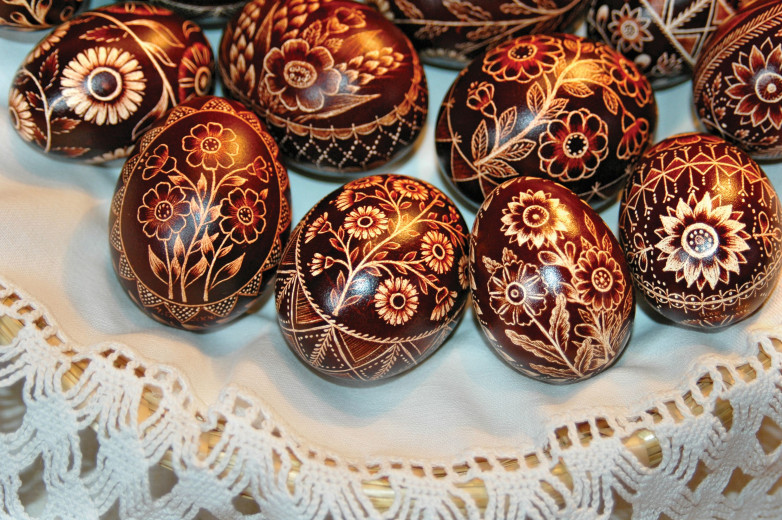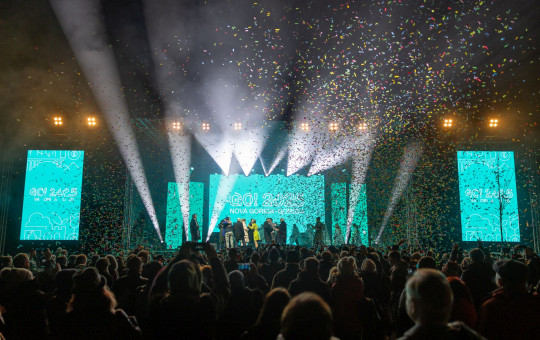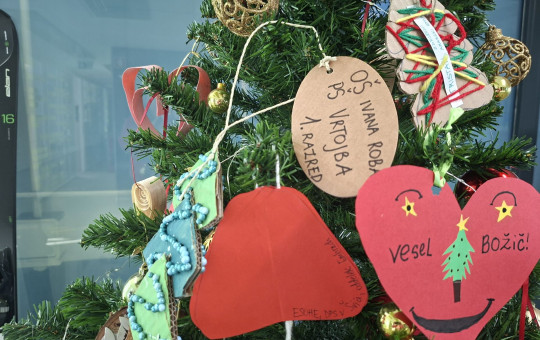Date: 21. March 2024
Time to read: 5 min
Celebrate Easter with us and try typical Easter delicacies, which are a must when it comes to the holiday table spread. Learn about the traditions surrounding Easter.
Decorated Easter eggs from Bela krajina
Artfully created Easter eggs, for which a special pen is used to apply wax and create ornamentation, are one of the most distinctive images of Bela Krajina. The Easter eggs from Adlešiči are the most well-known, as their tradition dates back more than 150 years. They are dyed black, and they depict motifs from the Bela Krajina environment. Those parts that are to be left undyed are protected with wax, which is applied using a special pen. The eggs are then submerged into natural dyes, and finally coated with lard, so that they have an even better gloss
-
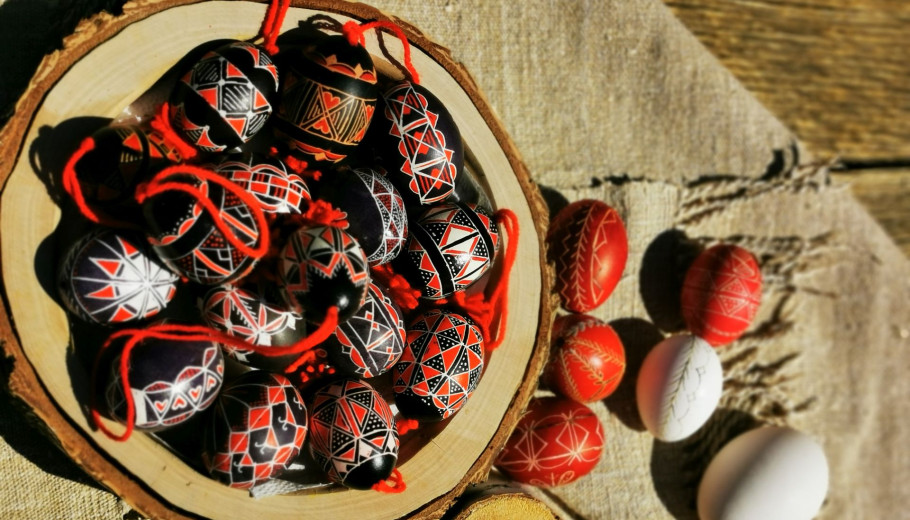 Eggs appear in various cultures of the world and are one of the oldest symbols for new life and fertility. Photo: Ukom archive
Eggs appear in various cultures of the world and are one of the oldest symbols for new life and fertility. Photo: Ukom archive
-
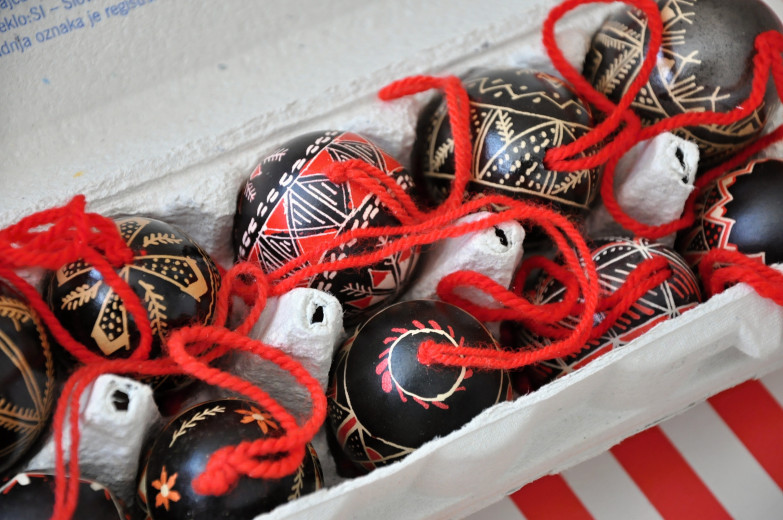 Just like in many other countries, Easter eggs are dyed and decorated in different ways. Every region has its own name for them, its own motifs, and methods. Photo: Rasto Božič/STA
Just like in many other countries, Easter eggs are dyed and decorated in different ways. Every region has its own name for them, its own motifs, and methods. Photo: Rasto Božič/STA
Making Easter eggs
Thanks to the efforts of individual women, the production of the Adlešiči pisanice has been preserved, but slightly adapted to modern needs. The Belokranjska pisanica is white, red and black, coloured with crepe paper and industrial black textile dye. Most of the time it is blown out and a wool thread is threaded through the hole, with a coffin on one side and a loop for hanging on the other. Nada Cvitkovič, who runs the Cvitkovič home craft, learned to write the Belokranjska pisanice many years ago from her mother-in-law, Marica Cvitkovič, a master craftswoman.
"To write, we need eggs (chicken, duck, goose), which are blown out as a souvenir. We also need a crayon, beeswax, a candle, red crepe paper, black paint and a cooking pot. Heat the beeswax in the crayon over a flame until it becomes liquid and write on the egg to make a white pattern. Dip the written egg in red paint (crepe paper soaked in water). The paint does not stick to the waxed patterns. When the colour of the crayons is red, continue writing the patterns (red patterns). Then cook in black paint until boiling. Also black paint does not stick where there is wax. The pisanicas are carefully removed from the container, wiped clean, oiled and, if they are blown out, decorated with red cof," explains Mrs Cvitkovič, explaining the process of making Belokranjska pisanicas.
Preserving a precious tradition
A master in the making of Belokranjska pisanica, she runs workshops throughout Slovenia for both young and old. "Descendants of our emigrants from abroad, especially from America, often choose to make pisanica, as do families who come from other countries and stop in Bela Krajina for a few days," says Mrs Cvitkovič, adding that they also organise exhibitions of pisanica.
Passing on knowledge to younger generations is also important to her. At the Mirana Jaric Primary School in Črnomelj, there is an extra-curricular activity where pupils gain knowledge and experience of the White Carpathian pisanicas. "They have already won flattering awards in competitions, including international ones," says Mrs Cvitkovič, who also passes on her knowledge to her children, especially her daughter Kristina.
Since 2012, the Belokranjska pisanica has also been entered in the Slovenian Register of Living Cultural Heritage, and given the efforts of the local people in Adlešičy and the surrounding area to preserve its tradition, we are confident that the younger generation will also acquire the knowledge of writing Belokranjska pisanica and pass it on.
-
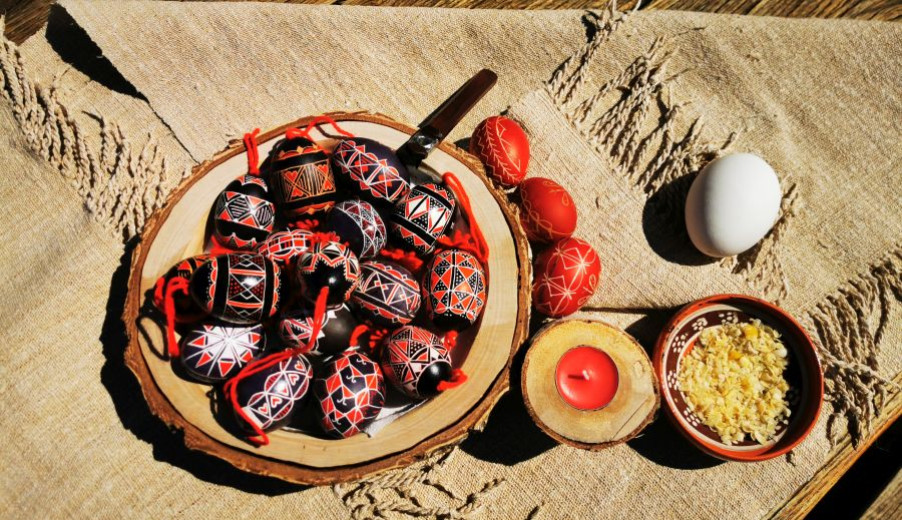 The decorating of eggs is a unique expression of folk art and craft skills that is passed on from generation to generation, and which has been preserved until today. Photo: Ukom archive
The decorating of eggs is a unique expression of folk art and craft skills that is passed on from generation to generation, and which has been preserved until today. Photo: Ukom archive
-
 These are dyed eggs symbolising Christ's resurrection, and the colour red symbolises his blood. Photo: Jošt Gantar/slovenia.info
These are dyed eggs symbolising Christ's resurrection, and the colour red symbolises his blood. Photo: Jošt Gantar/slovenia.info
Celebrate Easter in Slovenia!
Easter is a festivity at which the whole family comes together and old customs are revived. The festive table groans beneath the weight of traditional specialities prepared with care in every household. Particular attention is paid to the preparation of pirhi. These painted hard-boiled or blown eggs are one of the most recognisable Easter symbols and reflect the diversity of Slovenia's various regions. They are also part of various customs and games such as "cutting" Easter eggs. Join the Easter celebrations in Slovenia!
Easter is the largest Christian holiday, and Slovenia also has a rich tradition in observing it.

